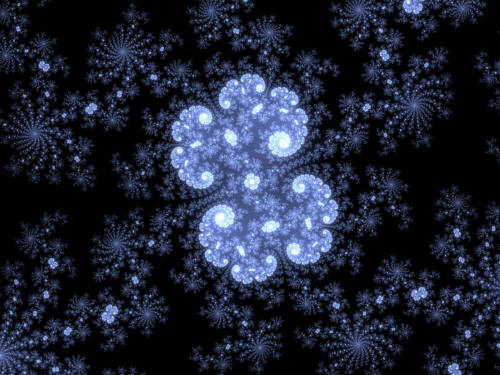|
|
| home | features | exhibitions | interviews | profiles | webprojects | gazetteer | links | archive | forum |
|
Conrad Shawcross and Matthew Watkins on sailing, science and spirals Artist Conrad Shawcross and mathematician Dr Matthew Watkins interviewed by Rupert White towards the end of their joint residency at Urbanomic, Falmouth.
CS I spent my summers in St Mawes. My Dad has a house in St Mawes that was my grandfather's. I used to come down for 6 weeks at a time when I was a teenager - and I've been coming here since I was about 2 or 3.
And I understand that you learnt to sail here... CS Yeah that was amazing and quite an influence on my work. I used to have a 'St Mawes One' design. It's a wooden sail boat. They're based in St Mawes. There are only about 50 of them...
The 'Pre-retroscope' works (pictures above and below) use a boat... CS I've made a few that have involved different river journeys. I did one in 2003 up the River Fal, and made this rotational film with it. And one out to sea with a panoramic of the horizon.
CS There's been a series. I did one in New York - the Gowanus Canal - a very different setting to the River Fal. It's one of the most polluted waterways in the world. A toxic waste-dump and a big contrast...
But the works you're best known for are big kinetic sculptures. You've recently made 'Chord' (below right) in London where was this sited exactly? CS It was in the tunnel underneath Holborn, in a disused tramway system underneath the Kingsway in Camden. It was a temporary exhibition. Hopefully we'll show it in the Ukraine at Gogofest which is a big festival in Russia. I might take one of the machines only: it can be reconfigured for different spaces. If we get the funding I'm hoping to do it in Dorchester Abbey in Oxford, and have just one machine stationary like a sunflower that is slightly downturned, with strings pulled across the space by a self-turning winch...
You've made a few related ropemaking machines. Would the first one have been 'Paradigm'? CS The first functioning machine was 'The Nervous System' (below left). 'Paradigm' was an impossible machine. It was supposed to unravel a rope and feed it back into itself but it's kind of impossible. When I built it I put myself in the role of an idealistic engineer who was going to try and build it even though as an artist I know it was impossible. It's a sad machine that embodies ideas of failure...
CS It looks at previous notions, yes, it looks at the history of science and the paradigms shifts that have happened in the wake of scientific discovery.
Thinking about what might have happened had we gone down a different path? CS But not so much the science fiction. It's more looking at redundant technology and previous epic searches for the truth, and it's useful to use models that failed to show that kind of endeavor. A lot of my systems are knowingly flawed, in the sense that they are pseudo-models, like they try to visualise time. Matthew is writing this series of books trying to visualise mathematics for non-mathematicians: to use visual references and allegory and metaphor to get those ideas across. And I 'm trying to visualise abstract ideas and non-visual ideas like time and the philosophy of time. But our motives are quite different as I am quite interested in the ambiguity of an object, whereas Matthew is really keen to be exact without much room for interpretation.
Matthew, you have a PhD in Maths and you're affiliated with Exeter University as a researcher. Your main interests are number theory and prime numbers. What is it about them that attracts you?
There's an interesting psychological reaction there and that's not something a mathematician would normally dwell on.
Why wouldn't they dwell on it? A lot of people have tried to find a formula that explains the distribution of prime numbers... MW A number theorist would dwell on that. But they wouldn't dwell on the psychological reaction to the absence of pattern. There is n't a name for that kind of thing. A psychologist wouldn't know enough mathematics to say anything meaningful and a mathematician simply does n't care about that level of interpretation.
There's a comment on your website about being disillusioned with academic science. Is that something you're alluding to here? There's a disconnect between these different interpretations of the world... MW Yes. A lack of engagement with so many other areas of reality. I felt I was stuck in an ivory tower. You can get rewarded with funding and can become quite comfortable in that position. I was more interested in how these ideas relate to everything else, and at the moment there is no framework in which this debate can occur.
MW We were talking about this earlier this week. For example the distinction between a mathematician and a physicist: there is a lot of confusion in the public understanding of the differences. Generally mathematicians supply the conceptual frameworks which physicists apply with their models. There was a time not that long along where that distinction was meaningless. As a mathematician you were concerned with all these things and there was no separation. But there is now increasing specialisation in academia.
Hence the rationale for this residency: it becomes an opportunity to work across such boundaries. So thinking about your work here, did you have some contact with each other before you came down? CS Yes, we had some contact, but Robin (Mackay) was keen that we didn't do too much beforehand. He was keen that the exchange happened under the roof of Urbanomic. It was open-ended as to whether we were going to be able to work together or just reach an impasse. The uncertainty of what we were going to do together was interesting. And its rare for me to have a week where I'm not making things in my studio, and I'm sitting on my hands and returning to an academic environment and have the luxury of time to debate something.
What have you talked about? Have you found a common language? Where's the overlap? CS If I was better at Maths we could have that common language. I did it at A level...but I'm very interested in ratios and the idea of what a number is to another number. But Matthew is obviously on a different level. MW There is the use of metaphor which is something we both have in common. But the thing we keep coming up against is that fact that our motives are different. I am working on a set of books, and the way I would gauge the success of one of my books is the extent to which someone has understood the precise set of ideas that I am trying to draw down from the world of high mathematics into popular understanding. The success of one of Conrad's pieces is gauged in a more open-ended way. People could come away from it with wildly different interpretations and that would be OK.
MW This is a tension we've been working around. There is also this distinction between the making of models and making of art. Science museums use interactive installations that incorporate design and aesthetic elements - but that's not what Conrad is doing. We want to make a collaborative piece but I have to let go of this need for precision and the elimination of ambiguity, and Conrad has to work the other way. I have to give Conrad a certain amount of rope, but there's a point where the rope runs out, and we're no longer talking about the same thing. So that more or less sums up the week I'd say...
Have you found yourself talking about artists from the late 60s who were interested in mathematical systems: the likes of Sol Lewitt, or Mel Bocher or Hanne Darboven (picture above left)? CS We've talked about Robert Smithson and Lewitt. MW We've looked at some other examples but there is nothing very satisfying. It was all a bit flimsy. Artists don't take on the ideas in enough depth. To a mathematician it seems arbitrary and pointless.
MW We've been talking about fractals as examples of visual forms that everyone can take something from. You don't need to understand the maths underlying the Mandelbrot set to look at it and think its really beautiful. People were actually trying in the 19th century to plot Julia sets which are the basic elements of the Mandelbrot on graph paper. They knew where the points would be. They could calculate them, but you'd need to draw 100s of thousands of points. It was only when IBM computers in the early 80s could plot lots of points that they started to get grainy black and white images of fractals. But Conrad's aesthetic is more mechanical than this. Spirals are a good way to explain logarithms to people so we've been talking about these.
Mario Merz was interested in Fibonacci spirals CS And he makes works in neon relating to prime numbers. MW Messaien the composer used prime numbers. Musicians have used random number generators for random inputs into a structure to generate unexpected outputs. I think Brian Eno's generative music was based on this idea. For a while we wanted to make a mechanical device that would involve spirals, but there are certain limitations when you are using gears. You need to have a spiral encoded into the structure to begin with. Then what's the point? It's just a facsimile you're just copying or printing something you're not generating it from fundamental principles. We've arrived at a simpler and more philosophical basis for a collaborative work. We'll end up making something that is on the border of a scientific model and an artwork. CS We'll keep the drawings and diagrams on the walls up for the exhibition. We've got the symposium at the weekend and then the exhibition next week...
'Secrets of Creation' is at Urbanomic Falmouth 13/3/10-22/3/10 |
|
|

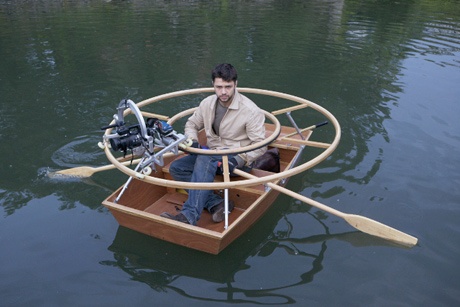 RW
So the two of you have come down to work together - as collaborating
specialists from two different disciplines - in the Urbanomic Studio in
Falmouth. But Conrad, you already have a connection with Cornwall...
RW
So the two of you have come down to work together - as collaborating
specialists from two different disciplines - in the Urbanomic Studio in
Falmouth. But Conrad, you already have a connection with Cornwall....jpg) So
you've made two of the films close to here, as well as in other places?
So
you've made two of the films close to here, as well as in other places?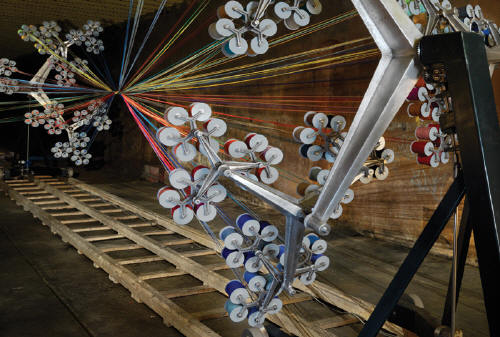
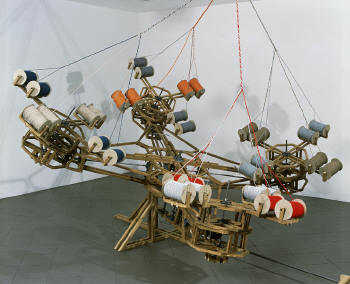
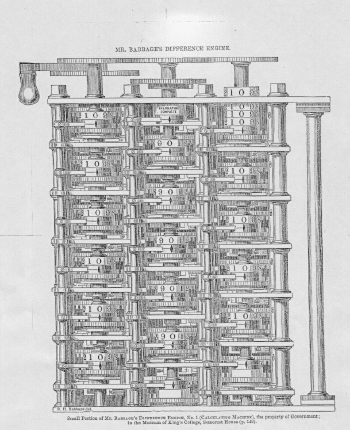
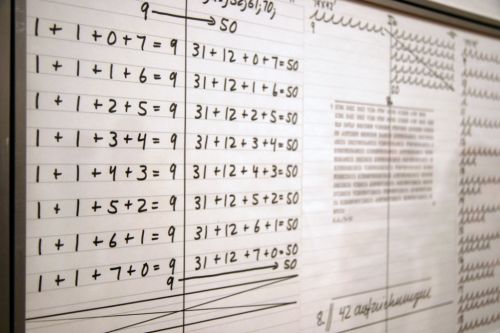 CS
I would not want a clear idea that is narrow in its interpretation.
Even though my reasons for making the work are quite specific, its not
necessary that they are transcribed to the viewer. Hopefully there is
ambiguity and the possibility to read it in different ways.
CS
I would not want a clear idea that is narrow in its interpretation.
Even though my reasons for making the work are quite specific, its not
necessary that they are transcribed to the viewer. Hopefully there is
ambiguity and the possibility to read it in different ways.